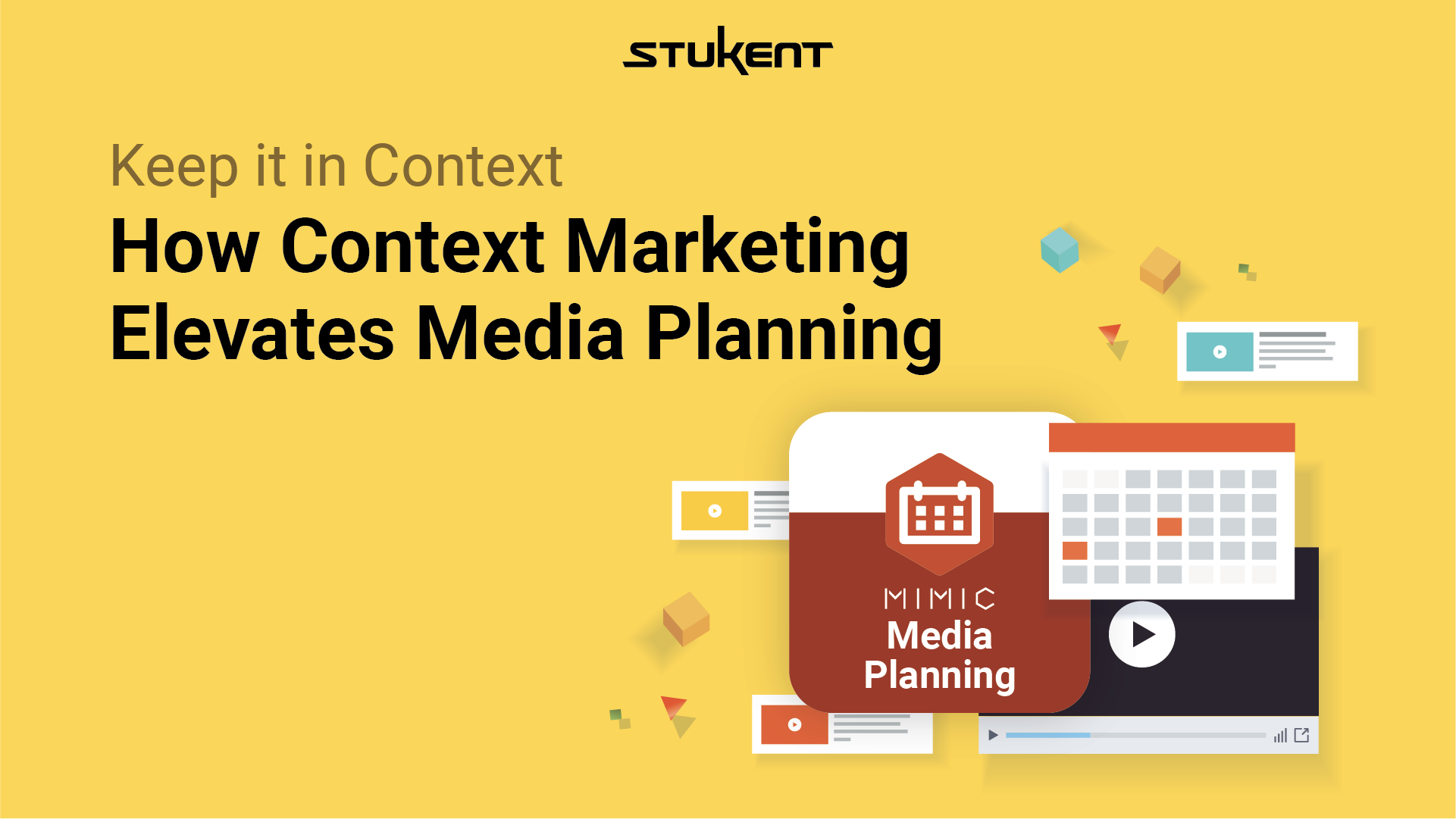In today’s competitive marketing landscape, the role of the media planner has evolved. And as more consumers become content curators and creators, mass advertising isn’t always practical. To reach the right audience at the right time, savvy media planners can use context marketing to achieve their goals.
Before writing that first line of copy, media planning students should think about the who, what, where, when, why, and how of their messaging. How do students position their message for consumers to see at just the right time? How do they make their audiences want to solve consumer pain points? How do students make context marketing work for them?
To answer these questions, our marketing experts at Stukent weighed in on context marketing and how it functions in media planning campaigns.
Educators can also request free instructor access to Stukent’s “Media Planning Essentials: A Journey into Creating Human Experiences” courseware, which is authored by advertising veteran and professor Beth Donnelly Egan. This leading-edge courseware introduces students to media planning, the customer decision model, understanding target audiences, and more.
Without further ado, let’s talk context marketing!
The Power of Context Marketing
Context marketing is delivering your message in the environment in which your audience consumes it — the circumstances, channel, timing, and other factors that come into play when consumers make buying decisions.
The consumer journey starts with a need. It can be as simple as, “I’m thirsty,” or more complex, such as, “I need a top-rated female general practitioner near my place of work.” Consumers often turn to digital tools to make these decisions, which is why media planners must make online interactions meaningful. Context marketing converts because it builds relationships with customers and increases retention.
“Consumers make decisions about brands constantly,” Egan says in the “Media Planning Essentials” courseware. “Not just about whether or not to buy a brand but what they think about a brand, how they feel about a brand, and whether or not they are so in love with a brand that they’re willing to … advocate for it.”
When you craft contextual experiences that meet consumers’ needs, you build trust in your brand, which in turn drives demand. Understand what customers want, then speak directly to them. Chances are, they’ll be more receptive.
For example, the pharmaceutical company Johnson & Johnson sells a line of skincare products called Clean & Clear. The target market for Clean & Clear products is teenage girls, an audience that engages with visual, shareable content.
So, how did Johnson & Johnson’s marketing team reach its target audience with context marketing? They created shareable e-postcards with links to free skin analysis and samples of Clean & Clear. As young women shared these e-postcards with their friends, the campaign went viral and positioned the brand’s product with the right audience at the right time.
Context marketing adapts its content to the needs of its audience. By putting your marketing messages into a context that’s targeted to individuals, you give those in your audience the information they need when they want it most.
Make It Personal
Context marketing is the key to creating engaging content — you need to know who you are marketing to as well as which stage of the buyer’s journey they are in. Don’t just think about the general characteristics of your audience, but also what their interests, views, and ideologies are. Demographic and psychographic details make a difference.
According to Rock Content, a marketing consulting firm, “One of the [key] aspects of contextual content is defining your target market and creating unique buyer personas. … It is essential to understand which persona you’re talking to and why your message matters to them.”
An astute media planner looks beyond an audience’s surface-level motivations. For example, what might drive a consumer between the ages of 25 and 34 to choose only organic foods? Does the consumer want to look and feel the best way possible? Enjoy long-term health benefits? Fit in with peers? Or be healthy enough to be able to experience all life has to offer? Considering the why of consumer behavior will help you create advertising campaigns that resonate.
“The goal of all advertising is to change and reinforce behavior,” Egan says. “Human behavior is not driven solely by actions and words; it is driven by motivations. To truly influence someone is to move beyond what they say and do and to understand what truly motivates them.”
By keeping your messaging on target, personal, and relatable, you will convert more consumers to your brand.
Time(ing) Is of the Essence
Great context marketing not only speaks to individual needs and desires — it’s tailored to appear at the right point in the buyer’s journey, too. Together with buyer personas, the buyer’s journey is an essential element of context marketing.
According to Egan’s “Media Planning Essentials,” the buyer’s journey includes seven steps:
- Awareness, or when the buyer becomes aware that they have a problem;
- Consideration, or when the buyer considers options to solve that problem;
- Trial, when the buyer decides on a solution and makes a purchase;
- User experience, or when the buyer evaluates the solution they chose;
- Repurchase, or whether or not the buyer was satisfied enough with a product to purchase it again;
- Advocacy, or whether or not a buyer turns into a brand loyalist;
- Share information, where the customer becomes an ambassador for your brand.
With those stages in mind, media planners need to decide where their greatest opportunities lie. You might provide specific offers or value-adds to your advocates, use smart calls to action that align with a website visitor’s stage in the buyer’s journey, leverage dynamic email campaigns, share social content, and more.
By understanding where your target audience is in the consumer journey, you can tailor your context to their needs.
Listen and Learn
“Customers don’t hate advertising,” Egan says. “They hate being shouted at, they hate being told what to do and how to think. But they love talking and they love when you listen to them.”
Context marketing can create great conversations, allowing marketers to learn a lot by listening to their audiences’ ideas, interests, concerns, and questions. For example, when Nabisco wanted to create a new Oreo cookie flavor, they forwent internal market research. Instead, they went to social media and asked customers to dream up new Oreo flavors. Hundreds of thousands of suggestions flooded in. Oreo responded to a majority of the posts — going so far as to create one-time varieties for some fans — and generated an engaging conversation around their new cookie. As you might expect, the new flavors were an instant hit.
The importance of context marketing can’t be denied; brands implement context marketing not only to convert consumers to their services or products but also to provide excellent customer service experiences. Keep your marketing in context, and it will take your brand farther.
To learn more about Stukent’s media planning courseware and simulations, or to get free instructor access to our advertising products, visit our website.






